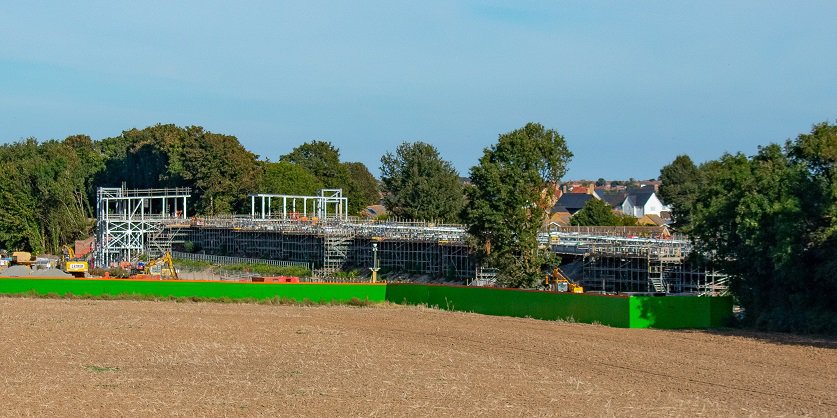
Building work is progressing at the Thanet Parkway railway station site with the lift and stairway tower framework in and the overbridge between platforms extending out to meet over the track.
Platform piles are well established and framework for the platform surface is also in place.
The main photo taken by John Horton shows the view that will be the main entrance side – “the down side” to Ramsgate.
The embankments have also been underpinned to secure them and improve stability. Work is being undertaken by Bam Engineering.
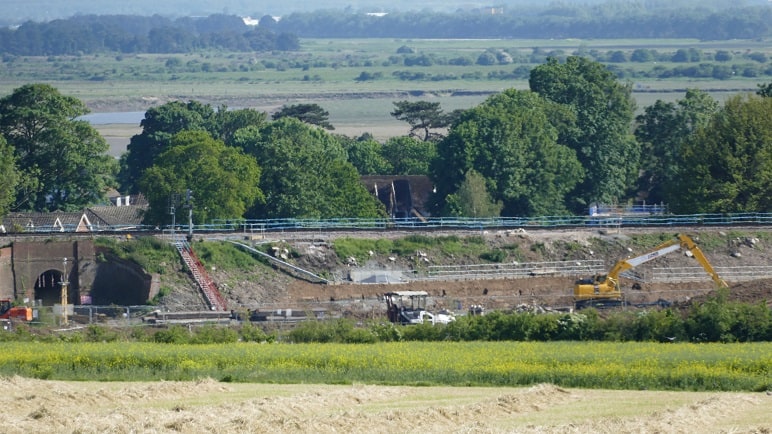
The construction of the junction from the A299 Hengist Way has been carried out by contractor Eurovia. This will be a new left in – left out traffic signal controlled junction.
Archaeological excavation at the site was undertaken by the Canterbury Archaeological Trust and is being managed by the WSP Cultural Heritage and Archaeology team.

Previous work has been done in the area, notably the East Kent Access work, a joint venture Oxford Wessex Archaeology; the Margate Pipeline by Wessex Archaeology; and Thanet Earth by CAT.
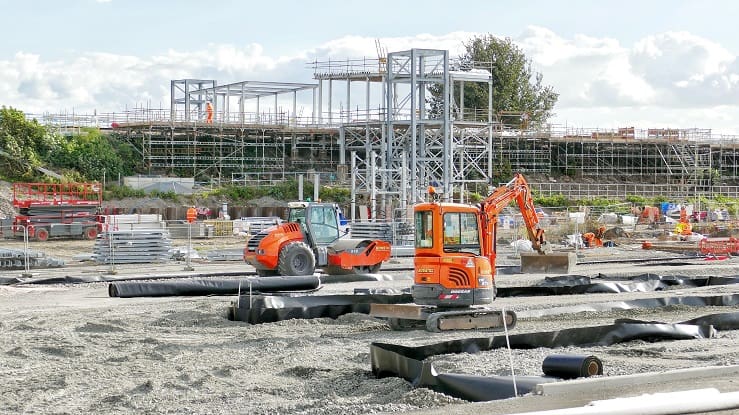
Previous excavations had built up a picture of a complex landscape packed with prehistoric settlements, monuments, and burials dating from the Neolithic to the Anglo-Saxon period into the Second World War.
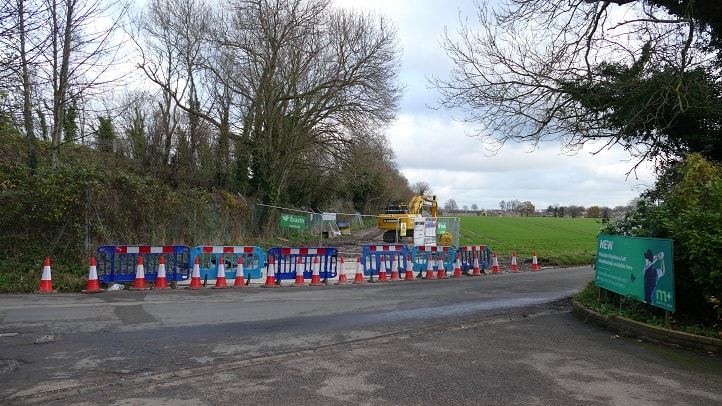
Finds and features indicate a small settlement or farmstead dating to the late Iron Age, Roman, and Anglo-Saxon periods. CAT excavated a complex network of ditches, likely to be field boundaries, and refuse pits containing broken material culture relating to agriculture and domestic life.
In among the ditches and pits the team discovered the remains of a number of structures, with hearths and mettled floors, dating to the Roman period or possibly even the Anglo-Saxon period. One of the floors shows signs of slumping into an earlier feature.
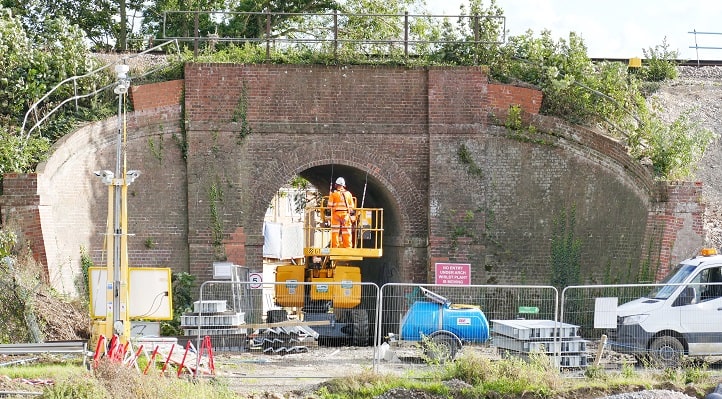
The parkway station is on the Ashford to Ramsgate line. The station is off the A299 Hengist Way and will provide local connections for pedestrians and cyclists.
There are two level crossings either side of the new station (at Cliffsend and Sevenscore) and some upgrade works have to be completed before the new station can open.
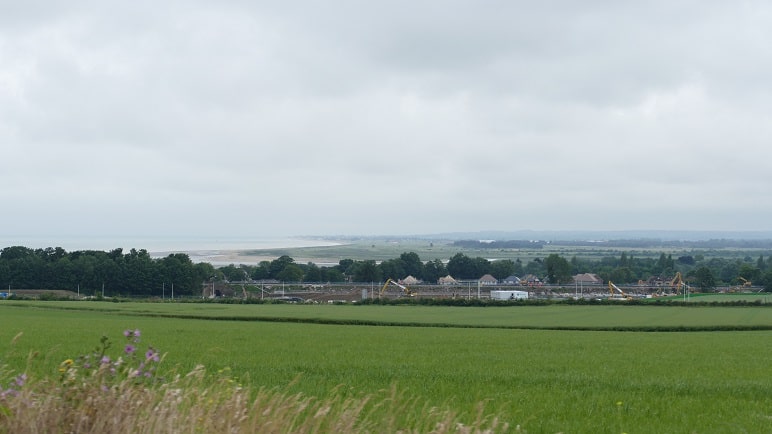
At Sevenscore you are unlikely to notice any difference as the changes will be to the way the crossing is controlled. At Cliffsend, the level crossing will be completely upgraded.
The £34million Thanet Parkway Station has spiralled in cost from an initial £11.2 million.
The 9.27 hectare greenfield site will accommodate an unmanned station for up to six trains an hour, along with a 297-space car park, a forecourt with bus stops, drop-off and pick-up zones, electric vehicle charging points and secure cycle storage.
Kent County Council says the infrastructure project will provide more jobs for Cliffsend residents, reduce journey times from east Kent to London and improve the “attractiveness” of Thanet and Dover as places for investment.
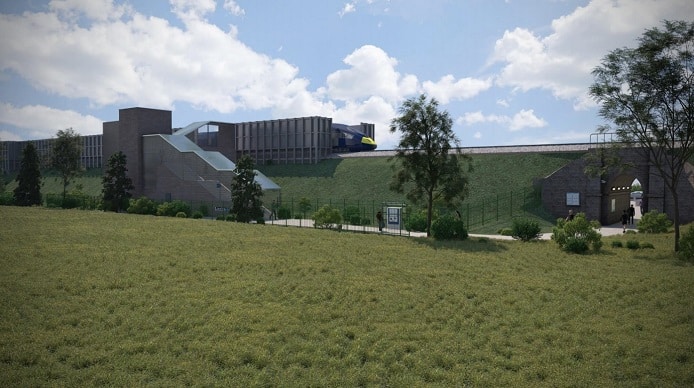
The long-standing dispute over building a new station in Thanet has rumbled on since 2010.
Kent County Council first put forward a planning application in May 2018 but withdrew it 18 months later due to concerns over footbridge access. The plans were altered and an existing Victorian underpass beneath the railway is being used to link the station’s two platforms.
There were widespread objections from Thanet county councillors and dozens of residents in the area, who together claim that the two-platform station is not needed and it is a “waste of public money”.
Funding for the scheme comes from:

South East Local Enterprise Partnership (SELEP) (Local Growth Fund) (£14 million)
Getting Building Fund (HM Government) (£11.999 million)
New Stations Fund (£3.4 million)
Thanet District Council (£2 million)
East Kent Spatial Development Company (£700k)
Kent County Council (the remaining funds).
Find the CAT blog on the dig here
Additional information with thanks to John Horton

